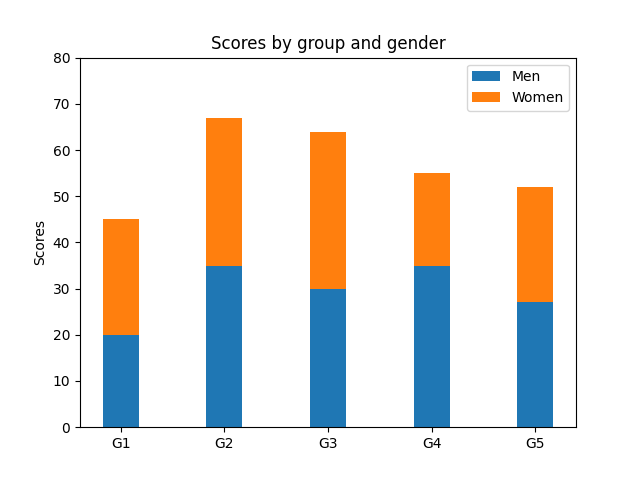E. Iris and the Tree
#树形结构 #贪心 #数学
题目描述
Given a rooted tree with the root at vertex 1 1 1. For any vertex i i i ( 1 ≤ i ≤ n 1 \leq i \leq n 1≤i≤n) in the tree, there is an edge connecting vertices i i i and p i p_i pi ( 1 ≤ p i ≤ i 1 \leq p_i \leq i 1≤pi≤i), with a weight equal to t i t_i ti.
Iris does not know the values of t i t_i ti, but she knows that ∑ i = 2 n t i = w \displaystyle\sum_{i=2}^n t_i = w i=2∑nti=w and each of the t i t_i ti is a non-negative integer.
The vertices of the tree are numbered in a special way: the numbers of the vertices in each subtree are consecutive integers. In other words, the vertices of the tree are numbered in the order of a depth-first search.

The tree in this picture satisfies the condition. For example, in the subtree of vertex 2 2 2, the vertex numbers are 2 , 3 , 4 , 5 2, 3, 4, 5 2,3,4,5, which are consecutive integers.

The tree in this picture does not satisfy the condition, as in the subtree of vertex 2 2 2, the vertex numbers 2 2 2 and 4 4 4 are not consecutive integers.
We define dist ( u , v ) \operatorname{dist}(u, v) dist(u,v) as the length of the simple path between vertices u u u and v v v in the tree.
Next, there will be n − 1 n - 1 n−1 events:
- Iris is given integers x x x and y y y, indicating that t x = y t_x = y tx=y.
After each event, Iris wants to know the maximum possible value of dist ( i , i m o d n + 1 ) \operatorname{dist}(i, i \bmod n + 1) dist(i,imodn+1) independently for each i i i ( 1 ≤ i ≤ n 1\le i\le n 1≤i≤n). She only needs to know the sum of these n n n values. Please help Iris quickly get the answers.
Note that when calculating the maximum possible values of dist ( i , i m o d n + 1 ) \operatorname{dist}(i, i \bmod n + 1) dist(i,imodn+1) and dist ( j , j m o d n + 1 ) \operatorname{dist}(j, j \bmod n + 1) dist(j,jmodn+1) for i ≠ j i \ne j i=j, the unknown edge weights may be different.
输入格式
Each test consists of multiple test cases. The first line contains a single integer t t t ( 1 ≤ t ≤ 1 0 4 1 \leq t \leq 10^4 1≤t≤104) — the number of test cases. The description of the test cases follows.
The first line of each test case contains two integers n n n and w w w ( 2 ≤ n ≤ 2 ⋅ 1 0 5 2 \le n \le 2 \cdot 10^5 2≤n≤2⋅105, 0 ≤ w ≤ 1 0 12 0 \leq w \leq 10^{12} 0≤w≤1012) — the number of vertices in the tree and the sum of the edge weights.
The second line of each test case contains n − 1 n - 1 n−1 integers p 2 , p 3 , … , p n p_2, p_3, \ldots, p_n p2,p3,…,pn ( 1 ≤ p i ≤ i 1 \leq p_i \leq i 1≤pi≤i) — the description of the edges of the tree.
Then follow n − 1 n-1 n−1 lines indicating the events. Each line contains two integers x x x and y y y ( 2 ≤ x ≤ n 2 \leq x \leq n 2≤x≤n, 0 ≤ y ≤ w 0 \leq y \leq w 0≤y≤w), indicating that t x = y t_x = y tx=y.
It is guaranteed that all x x x in the events are distinct. It is also guaranteed that the sum of all y y y equals w w w.
It is guaranteed that the sum of n n n over all test cases does not exceed 2 ⋅ 1 0 5 2 \cdot 10^5 2⋅105.
输出格式
For each test case, output one line containing n − 1 n-1 n−1 integers, each representing the answer after each event.
样例 #1
样例输入 #1
4
2 1000000000000
1
2 1000000000000
4 9
1 1 1
2 2
4 4
3 3
6 100
1 2 3 2 1
6 17
3 32
2 4
4 26
5 21
10 511
1 2 2 4 2 1 1 8 8
3 2
6 16
10 256
9 128
2 1
5 8
8 64
4 4
7 32
样例输出 #1
2000000000000
25 18 18
449 302 247 200 200
4585 4473 2681 1567 1454 1322 1094 1022 1022
解法
解题思路
首先,我们有 n n n条路径,一开始,当还没有路径被固定值的时候,我们的路径总和为 n ∗ w n*w n∗w,也就是我们对每条路径都分配一个最大值,其他路径分配为 0 0 0。
考虑但存在一条路径被固定时,会发生什么?
首先,这棵树是根据 d f s dfs dfs序来构建的数,并且路径两点分别为 ( i , i % n + 1 ) (i,i\%n+1) (i,i%n+1),通过观察发现,设这条路径为为 u − v u-v u−v,经过这条边的路径就两种:
1. 1. 1. u − v u-v u−v这条边
2. 2. 2. v − m a x s o n v v - maxson_v v−maxsonv,其中 m a x s o n v maxson_v maxsonv指的是 v v v子树的最大 d f s dfs dfs序节点。
因此,我们在固定这条边路径大小时,也会使得这两条路径失去相应的大小,我们无法再指定它们为 w w w了,而是指定其为 w − y w - y w−y,这里 y y y为指定的边权,那么我们总共减少 ( n − 2 ) ∗ y (n-2)*y (n−2)∗y的权值。
同时,当一条路径上的所有边都被固定了值以后,这个路径也会失去 w − s u m w - sum w−sum的大小,其中 s u m sum sum是已经指定路径的全部大小。 原因很显然,因为这条路径所有的边都被固定了,它不应该是原来的 w w w了,应该减去多出来的一部分,即 w − s u m w-sum w−sum
同时,我们还应该记录这样完全被固定边的路径,,记为 s s s,在每一次指定新边的时候,由于可分配的路径数变为了 n − s n-s n−s,我们相应的权值应该减少 ( n − s − 2 ) ∗ y (n-s-2)*y (n−s−2)∗y
代码
void solve() {
int n, w;
std::cin >> n >> w;
std::vector<std::vector<int>>e(n + 1);
for (int i = 2; i <= n; ++i) {
int u;
std::cin >> u;
e[u].push_back(i);
}
std::vector<int>son(n + 1), deep(n + 1);
std::vector<std::array<int, 24>> fa(n + 1);
auto dfs = [&](auto&& self, int u, int Fa) ->void {
deep[u] = deep[Fa] + 1; son[u] = u;
fa[u][0] = Fa;
for (int i = 1; i <= 23; ++i) {
fa[u][i] = fa[fa[u][i - 1]][i - 1];
}
for (auto& v : e[u]) {
self(self, v, u);
son[u] = std::max(son[u], son[v]);
}
};
dfs(dfs, 1, 1);
auto lca = [&](int x, int y)->int {
if (deep[x] < deep[y]) std::swap(x, y);
for (int i = 23; i >= 0; --i) {
if ((deep[x] - (1LL << i)) >= deep[y]) {
x = fa[x][i];
}
}
if (x == y) return x;
for (int i = 23; i >= 0; --i) {
if (fa[x][i] == fa[y][i]) continue;
x = fa[x][i], y = fa[y][i];
}
return fa[x][0];
};
std::vector<int>len(n + 1);
for (int i = 1; i <= n; ++i) {
len[i] = deep[i] + deep[i % n + 1] - 2 * deep[lca(i, i % n + 1)];
}
int res = n * w, sum = 0, s = 0;
for (int i = 1; i <= n - 1; ++i) {
int v, y;
std::cin >> v >> y;
int u = v - 1;
if (u == 0) u = n;
res -= (n - 2 - s) * y;
sum += y;
if (!--len[u]) {
res -= (w - sum);
++s;
}
if (!--len[son[v]]) {
res -= (w - sum);
++s;
}
std::cout << res << " ";
}
std::cout << "\n";
}
signed main() {
std::ios::sync_with_stdio(0);
std::cin.tie(0);
std::cout.tie(0);
int t = 1;
std::cin >> t;
while (t--) {
solve();
}
};
``


















![[Python学习日记-38] Python 中的函数的名称空间](https://i-blog.csdnimg.cn/direct/45744892177f44be9f7c25f2d18d9fba.png)
